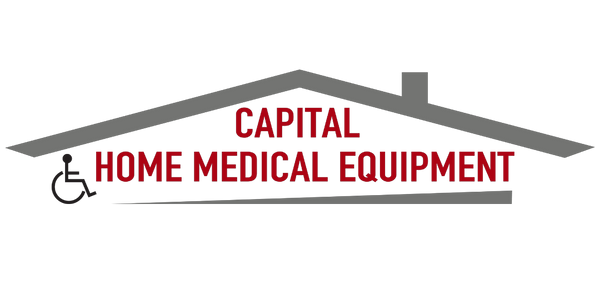What is a wound?
A wound by true definition is a breakdown in the protective function of the skin; the loss of continuity of epithelium, with or without loss of underlying connective tissue (i.e. muscle, bone, nerves) following injury to the skin or underlying tissues/ organs caused by surgery, a blow, a cut, chemicals, heat/ cold, friction/ shear force, pressure or as a result of diseases, such as leg ulcers or carcinomas.
Wound preparation is a crucial step in wound management.
Slough, devitalized tissue, and biofilms can all delay the wound healing process as they may:
Increase the risk of infection
Limit wound assessment
Inhibit the development of healthy tissue
Delayed wound healing may lead to:
Decreased patient quality of life
Increased time burden of wound treatment
The increased cost burden of wound treatment
Wound types
01.
Pressure ulcers
A pressure ulcer is a localized damage to the skin and the underlying soft tissue. The injury is usually over a bony prominence or related to a medical or other device due to unrelieved pressure.
The pressure ulcer can:
Present as intact skin or as an open wound
Be painful
Occur as a result of intense and/or prolonged pressure
Occur as a result of pressure in combination with shear
02.
Venous and Arterial Ulcers
A venous leg ulcer (VLU) is an open skin wound, or lesion, and that shows little progress towards healing within 4-6 weeks of when it initially occurred. Venous leg ulcers usually occur between the ankle and the knee (medial side of the lower leg) and are the most common type of chronic lower limb wound.
Venous leg ulcers are caused by disease or disrupted vein function, also known as chronic venous insufficiency (CVI) and ambulatory venous hypertension. chronic venous insufficiency usually results from damage to the valves in the leg veins (for example, varicose veins) or as a result of venous thrombosis.
03.
Wound Infection
A wound is considered infected when microorganisms that damage local tissue and delay wound healing are present.
The presence of microorganisms triggers an immune response in the patient. Whether or not this response is successful depends on a balance of two things:
the strength of the patient’s immune system; and
the amount and virulence of the pathogens.
04.
Diabetic foot ulcers
A diabetic foot ulcer, also known as diabetic foot disease, is a localized injury to the skin and/or underlying tissue, typically found below the ankle, in a person with diabetes. Living with diabetic foot disease has a significant impact on a person’s quality of life. People with diabetes are almost twice as likely to suffer from anxiety and depression as the general population. If you add diabetic foot disease to the equation, the burden on the patients, their families, the healthcare system, and society at large only increases. In fact, research shows that the five-year relative mortality rate of those with diabetic foot disease is 48%.
05.
Acute Wounds
An acute wound is a sudden injury to the skin. Acute wounds can happen anywhere on the body. They range in depth from superficial scratches to deep, penetrating wounds.
Healing vs. non-healing acute wounds
Acute wounds can either be healing or non-healing wounds. Healing wounds are usually caused by a one-off injury or trauma. They follow a normal healing process that is stable and predictable.
06.
Skin tears
A skin tear is a traumatic wound that is caused by a mechanical force. The mechanical force could be shear or friction, or it could be the result of removing an adherent dressing.
Skin tears can lead to partial or full separation of the skin’s outer layers (epidermis and dermis). They can also lead to a separation of both the epidermis and the dermis from the underlying structures (a full-thickness wound).
Wound products

Wound dressings
Traditionally wet-to-dry gauze has been used to dress wounds. Dressings that create and maintain a moist environment, however, are now considered to provide the optimal conditions for wound healing.

Semipermeable films
Semipermeable films were one of the first major advances in wound management and heralded a major change in the way wounds were managed. They consist of sterile plastic sheets of polyurethane coated with hypoallergenic acrylic adhesive and are used mainly as a transparent primary wound cover.

Hydrogels
Hydrogels consist of a matrix of insoluble polymers with up to 96% water content enabling them to donate water molecules to the wound surface and to maintain a moist environment at the wound bed. As the polymers are only partially hydrated, hydrogels have the ability to absorb a degree of wound exudate, the amount varying between different brands.

Alginates
Alginates are produced from the naturally occurring calcium and sodium salts of alginic acid found in a family of brown seaweed (Phaeophyceae). They generally fall into one of two kinds: those containing 100% calcium alginate or those that contain a combination of calcium with sodium alginate, usually in a ratio of 80:20.

Foam dressings
Foam dressings are manufactured as either a polyurethane or silicone foam. They transmit moisture vapour and oxygen and provide thermal insulation to the wound bed. Polyurethane foams consist of two or three layers, including a hydrophilic wound contact surface and a hydrophobic backing, making them highly absorbent.

Antimicrobial dressings
Silver, in ionic or nanocrystalline form, has for many years been used as an antimicrobial agent, particularly in the treatment of burns (in the form of silver sulfadiazine cream). The recent development of dressings impregnated with silver has widened its use for many other wound types that are either colonized or infected.
KANATA
BARRHAVEN
DOWNTOWN
DOWNTOWN




